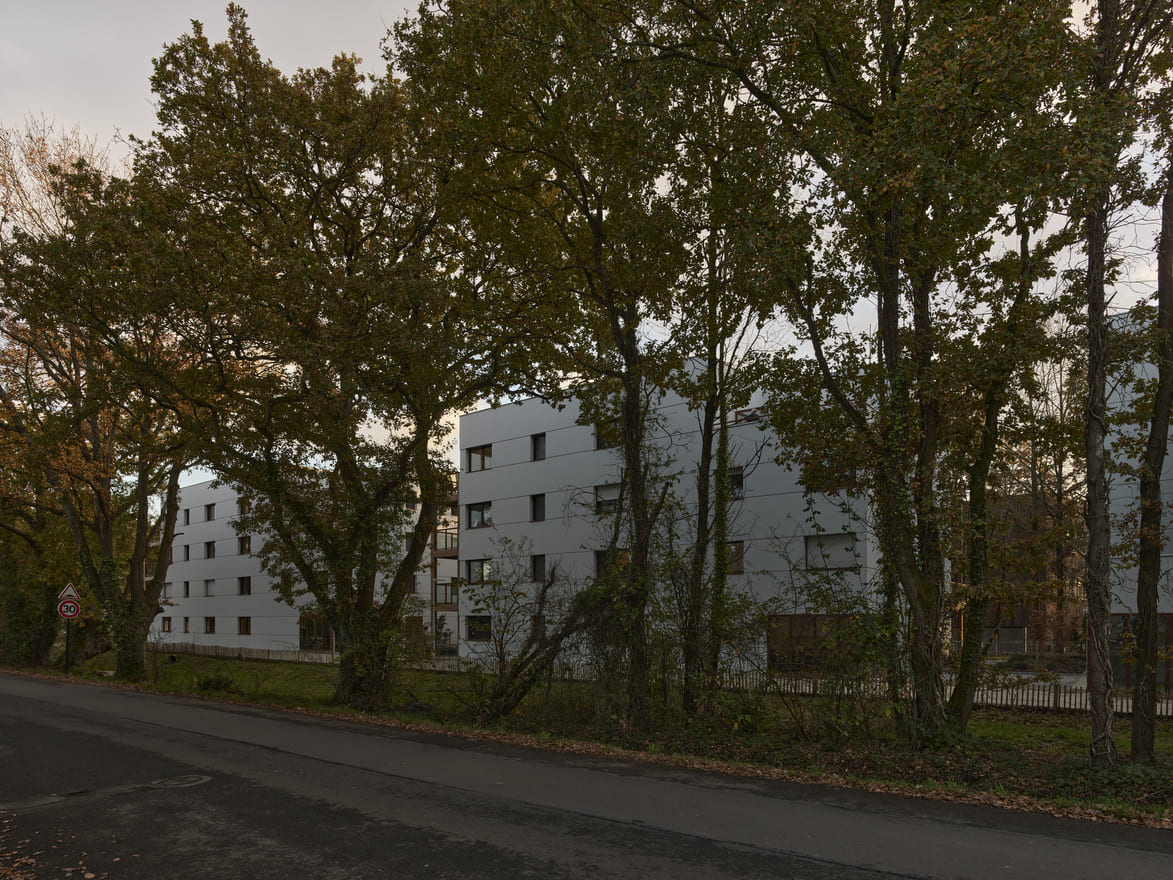On each project, we work specifically on the context. We are particularly interested in the close, distant, historical and sociological environment of the project. These data “feed” the design and come together to form an architecture. As the contexts in which we evolve are rarely homogeneous, our writing tends to be hybrid.
The ZAC Erdre-Porterie is located near the limit of Nantes, close to singular natural landscapes. Important wooded areas are present: conserving the site’s qualities is one of the challenges of this operation. Block BN4 is located between a wooded pedestrian path to the north and the courtyard of the new college to the south, which has preserved many trees.
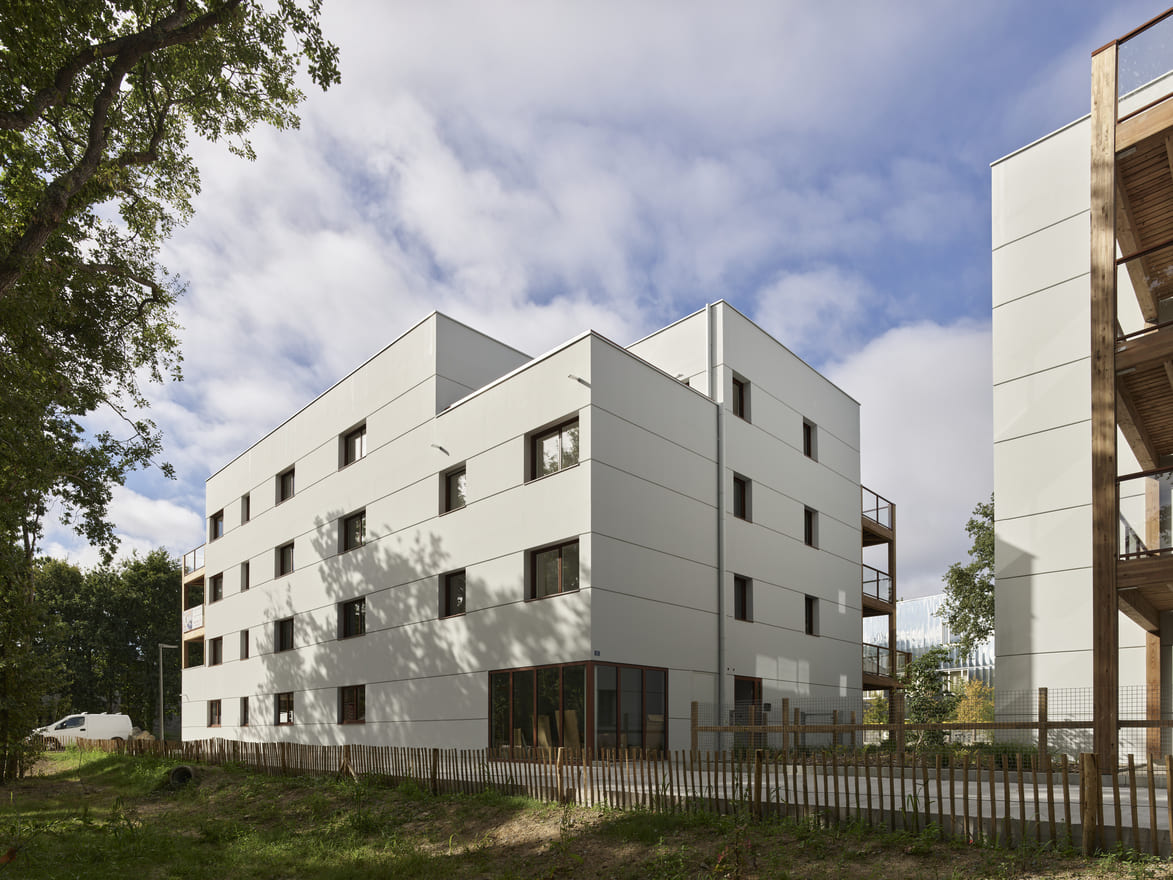
Photo: ©Stephane Chalmeau. (click on the image to view the photo gallery)
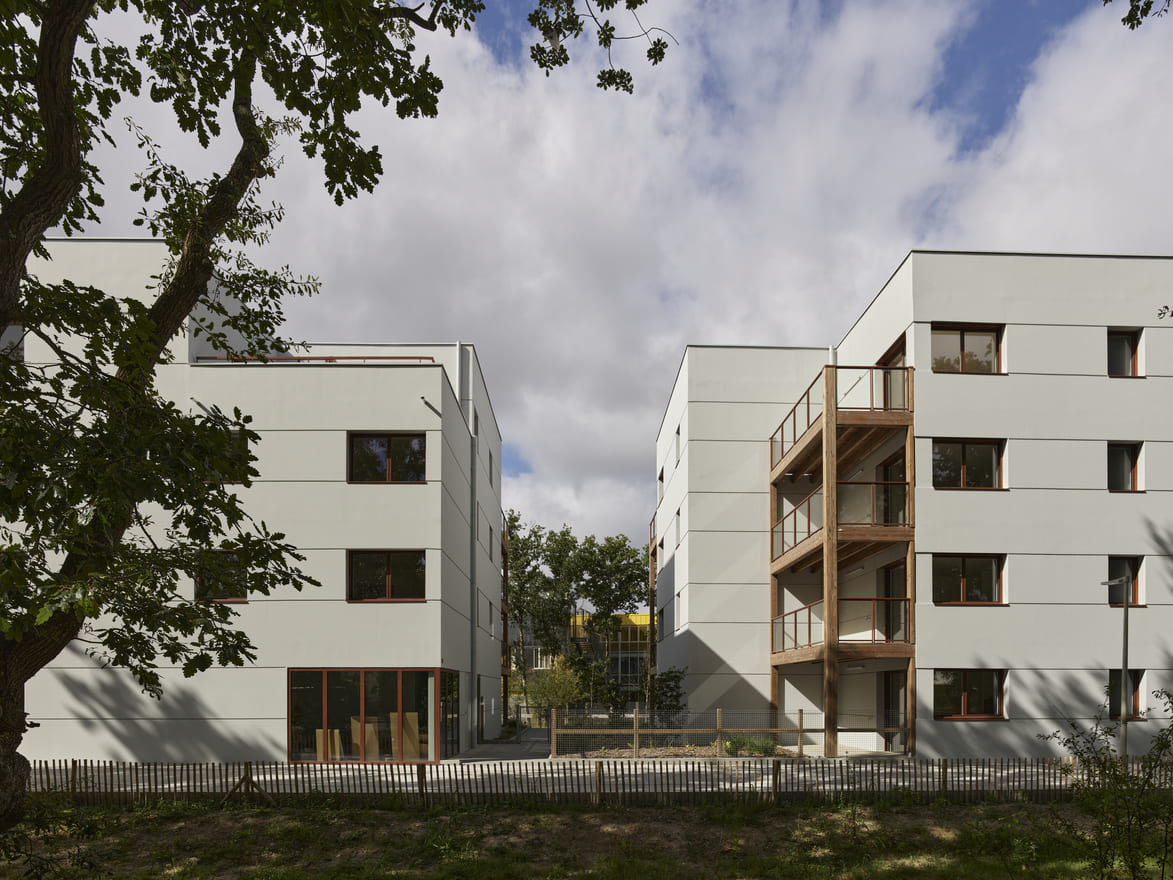

Urban stakes:
– Reclaiming urban life, giving priority to pedestrians and meeting places;
– To find back the gauges and appreciable altimeters;
– To offer housing that is generous in terms of its views and good orientations;
– Synchronize buildings with their immediate environment through their proportions and materials;
– Sequencing the facade and more broadly the project to create porosities, transparencies, rhythm.

General plan. ©a/LTA (click on the image to view the photo gallery)



Implantation This plot, a true place of urban sewing is imagined to be more sustainable, more desirable, more open to the landscape and its environment. The presence of numerous visual transparencies generates a porosity within the site itself. This feature facilitates the appearance of new uses. The issues of urban density and environment are also distinctive elements present in the project.
The project is devided into 3 distinct elements. This arrangement allows the creation of porosities throughout the island and the sequencing of the buildings.
The heart of the plot retranscribes the wooded environment of the site, through the creation of a wooded meadow. It composes a decor that will be seen by the inhabitants from the terraces. Without creating a large number of uses, it is above all a constituent of the exterior atmosphere of the dwellings. The breakthroughs from the street leave perspectives towards this space, allowing visual continuity with the neighbourhood environment.
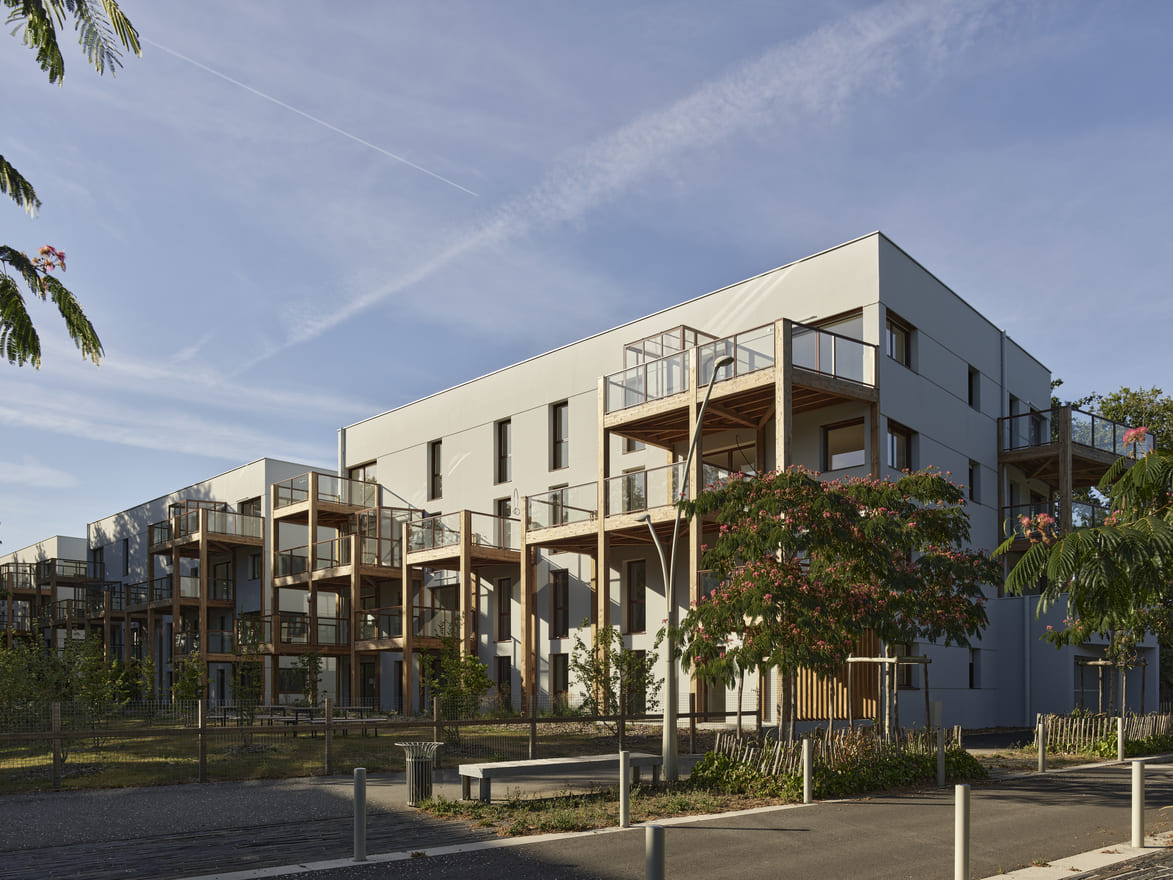
Photo: ©Stephane Chalmeau. (click on the image to view the photo gallery)
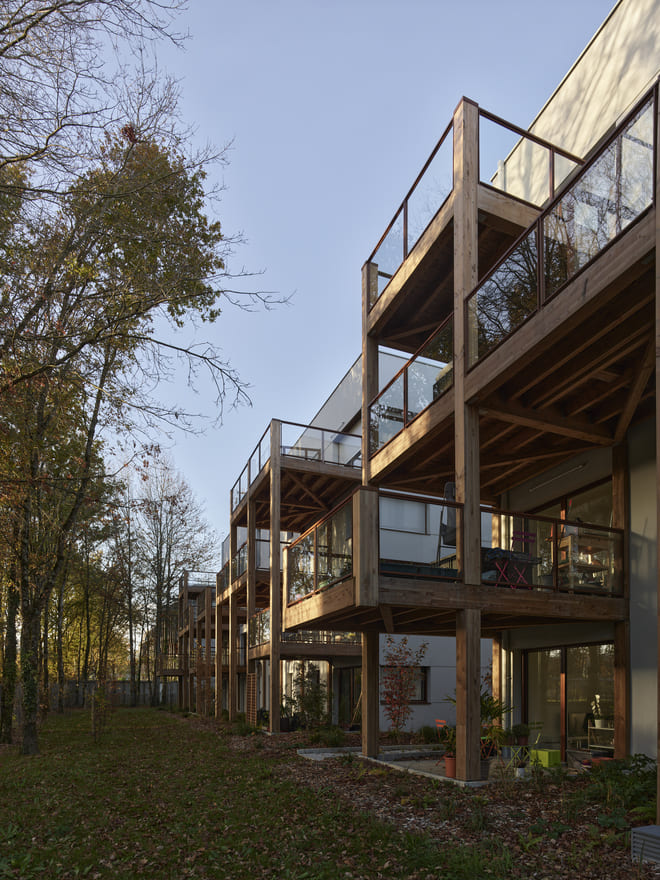
Urban hook The organization of the first floors of the collective buildings is thought in such a way as to favour an entrance to the buildings through the alleyways, at the same time more intimate in its approach but also generating encounters.
The base is the object of particular attention in its hanging on the ground but also in the choice of a careful landscaping treatment.

Photo: ©Stephane Chalmeau. (click on the image to view the photo gallery)

Access and parking The plot has a unique access from the road to the west. This access leads directly to the basement parking lot. The alleyways leading into the heart of the block are partly paved, to make the transition between the street and the entrances to the building. This alleyway gives access to a pathway connected to the wooded meadow. To the east, there is a space with a picnic table, creating a shared space around it. These elements are placed at a distance from the terraces by planted beds. Plantations are planned on the parking lot slab, on either side of the paths, allowing for a transition with the rest of the heart of the island. The lawn and the beds allow for a high soil permeability on the open ground.
The fence of the college is covered with climbers, in order not to create a too important opposite. The lateral separations of the parcel are made of wooden fencing, thus respecting the spirit of the district and the recommendations of the urban planners.

Photo: ©Stephane Chalmeau. (click on the image to view the photo gallery)



A vegetal atmosphere The plantations chosen on the site correspond to typical undergrowth vegetation, adapted to the local environment. The remote areas are composed of perennials and shrubs requiring little maintenance and taking into account the seasonality of the vegetation. The plant palette, composed of ferns, acanthus and bellflowers, reflects the atmosphere of the undergrowth. In addition, the proposed plantings encourage the diversity of foliage and ensure a high level of comfort for the first floor. The trees near the southern limit of the island are preserved. In addition to the existing tree stratum, 25 new trees are planted, using local species such as hornbeam or country maple.
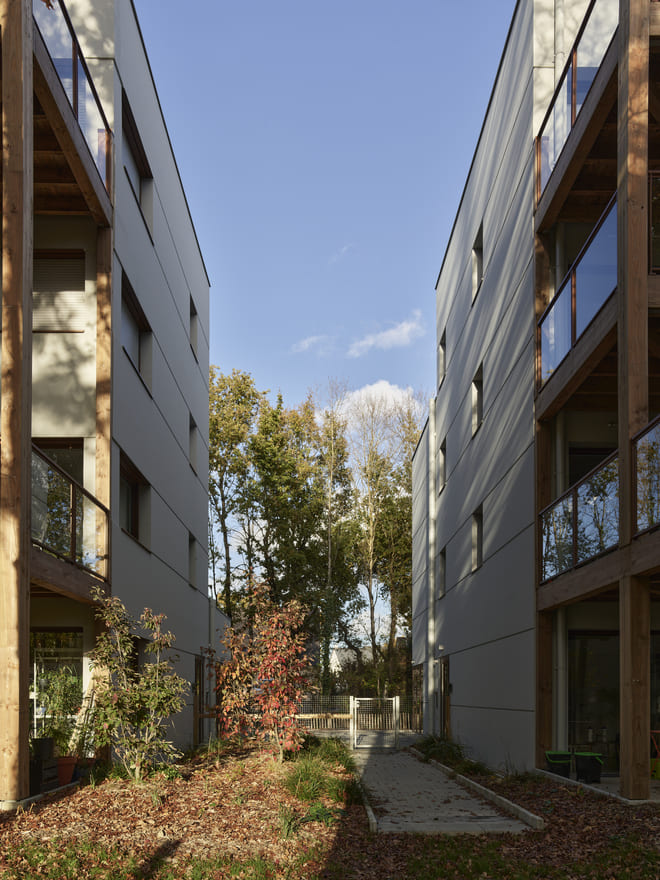
Photo: ©Stephane Chalmeau. (click on the image to view the photo gallery)

Architectural bias These are lively buildings and we believe that this generosity in the outside spaces will allow the inhabitants to take full advantage of their terraces and thus participate in the animation of the district. Thus, each outdoor space offers a minimum depth of 2 m, and up to 3 m for all the spaces to the south / west. The use of glass for the railings favors the reflections of the close environment, and on the other hand it puts the inhabitants at a distance and avoids the installation of occulting devices to isolate the glances.
The buildings we have designed for this island offer a sober architecture, accentuated by the choice of colors and the strict layout of the openings. However, the whole is lightened by the offsets, the splits that were found in the bodies of the buildings.
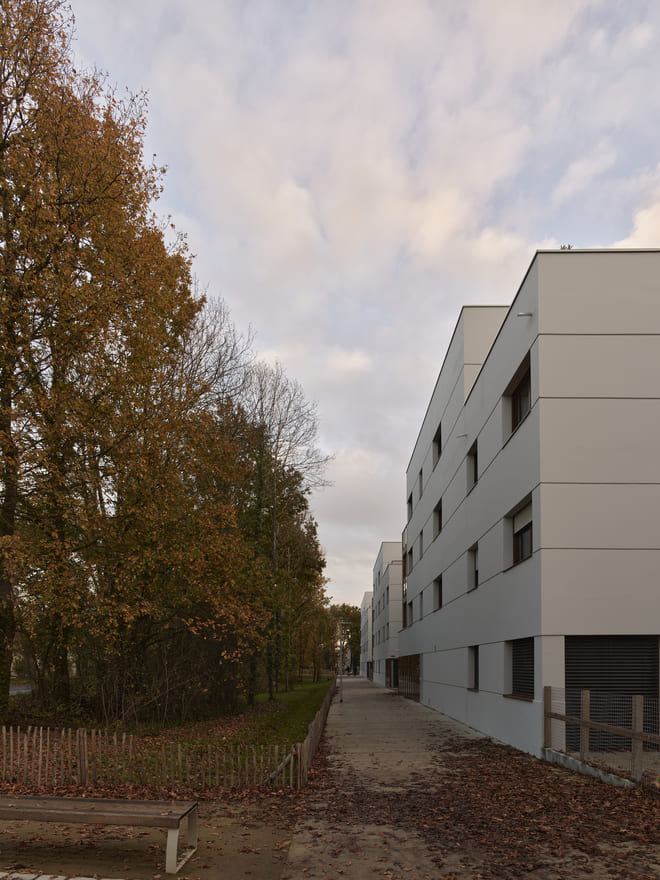
Photo: ©Stephane Chalmeau. (click on the image to view the photo gallery)
